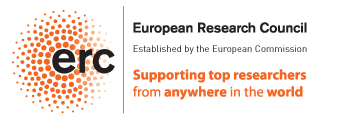Maître de conférences / Assistant Professor
Laboratoire Lagrange
Observatoire de la Côte d’Azur
Bâtiment H. Fizeau
28 avenue Valrose
06108 Nice cedex 2, France
I am a French astronomer working in the field of high angular resolution visible/infrared astronomy. I started working in astronomy a couple years after the first announced discovery of an extrasolar planet orbiting a Solar-type star… and have somehow always been working at developing the techniques, that someday will provide images of such planets. I also have some observing experience, mostly using Adaptive Optics from at the Palomar Hale Telescope, Keck II, and of course, the Subaru Telescope.
In 2013, I was hired as a Maître de Conférences at Observatoire de la Côte d’Azur in the beautiful city of Nice, France. Before that, I worked for about five years at the Subaru Telescope on the Big Island of Hawaii, where I primarily contributed to the development of an instrument called SCExAO: the Subaru Coronagraphic Extreme AO instrument, now open for science observations. If you are interested in preparing an observing proposal with SCExAO, I recommend you check the project webpage, now maintained by Nemanja Jovanovic
Finally, before working for Subaru, I was a Research Associate in the Astronomy Department at Cornell University. I was taking care of an observing program with non-redundant aperture masking interferometry (a natural evolution given that my PhD was about doing exactly the opposite with hypertelescopes), primarily conducted at Palomar Observatory in California and Keck in Hawaii. These observing programs, except for a few exotic targets, were essentially about finding faint companions in the close neighborhood of M- and L- dwarfs (i.e. small and cold stars and brown dwarfs). Some of these observations led to some very high precision dynamical masses on a couple of interesting objects. All of these results used the self calibrating properties of the amazing closure-phase, a concept first developed for radio-interferometry that found its way into the optical/IR. The level of calibration obtained with closure-phase reveals subtle structures in a regime of angular resolution known as super-resolution.
In October 2016, a new chapter has started for my research as I have been awarded a Consolidator Grant by the European Research Council (ERC) for my projet KERNEL that brings the power of interferometry to the analysis of conventional high-angular resolution images.

